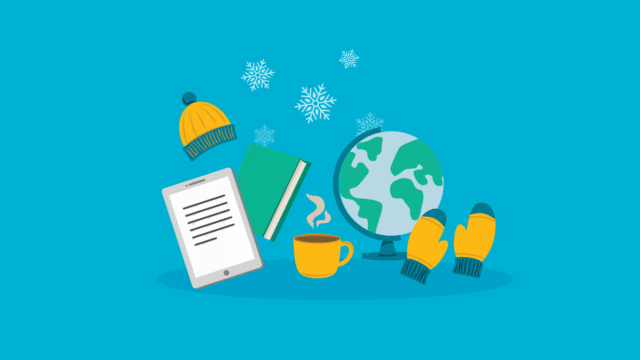
My stepdaughter is a teacher right now, so I know from personal experience that students, teachers, administrators and families are working together in new ways during this time of unprecedented challenge. It is amazing to see how everyone has mobilized to provide the academics, the comfort, and the continuity our children and youth need at this time.
Reading well is more important than ever, especially when it comes to staying informed and being able to discern which sources are reliable.This aspiration is supported by a curriculum that builds knowledge. You’ll read more about that in this blog—and at the end I've supplied a few of my personal recommendations for free online sources to support continued learning.
***
The 2019 Fall Edition of the quarterly publication Perspectives on Language and Literacy from the International Dyslexia Association (IDA) is dedicated to the importance of knowledge. Educators implementing evidence-based reading programs frequently address the five pillars of reading as set forth in the National Reading Panel report—phonemic awareness, phonics, fluency, vocabulary, and comprehension. I would argue for at least one more pillar: knowledge.
We have already resolved to Start Right, Finish Strong and to Navigate the Two Worlds of Reading (Print and Digital), and the pursuit of background knowledge is integral to learning to read and learning about ourselves, others, and the world.
Content knowledge is critical to making meaning—the very why of reading—and knowledge and comprehension are part of a continuous and virtuous cycle. Simply said, the more you know, the more you understand.

This illustrates the principle articulated by E.D. Hirsch: “Knowledge begets knowledge.” The knowledge imperative is bolstered by the recent work of Dylan Wiliam, author of Creating the Schools Our Children Need, where he posits that a knowledge-rich curriculum closes achievement gaps. Grounding his work in cognitive science, Wiliam explains the “massive impact” knowledge can have on long-term memory.
I’ve been thinking and writing about this for a while and wrote about the value of reading informational texts to gain knowledge in 2011. At that time I wrote, “Simply, students who read more, understand more, learn more, enjoy reading more.”
Here’s how we can increase the focus on building knowledge from P–12. In addition to the central place of the language arts, provide a comprehensive curriculum in the arts, health and physical education, STEM, and social studies.
- Some say every teacher is a teacher of reading and I don’t entirely agree. But I would say that all teachers are teachers of content. And across the curriculum, teachers have the opportunity to unpack the literacy demands of their subjects.
- The “baseball study” (Racht & Leslie, 1988) revealed that knowledge of the subject was more important than the ability of the reader. Students who knew more about baseball demonstrated better comprehension of the text. So it’s important to prioritize knowledge building over skill building. This doesn’t mean you shouldn't do some of the latter.
- Vocabulary can serve as a proxy for comprehension. Studies show that the words children need to succeed aren’t going to be found in everyday conversation or media productions—but they will be found in texts. Students need thousands of words and exposure to a knowledge-rich curriculum will give them words to learn and live by. And I haven’t met or taught a child who didn’t like big, important words at every age and at every stage of learning.
Children and youth need knowledge to succeed in school and beyond. The more you know, the more you grow as a learner and as a person. There’s another Dylan I want to tell you about: my great-nephew and the youngest member of our family. I’m going to try this I Love Science board book from a new series for babies. Who knows: science might become his preschool passion and encourage his future accomplishment as a reader and writer.
***
As I mentioned, here are some online sources I personally suggest for your consideration:
- National Geographic: Great content that now has free access to keep us all learning more about our world—and good for any age and stage of learning.
- PBS Kids: I find this particularly good for children from PreK to grade 3. The children in my family have learned a lot about science and social studies from Curious George, The Cat in the Hat and the Wild Kratts (I have, too).
- Brains On!: These are science podcasts on a variety of topics. Might be a good break from screen time. As well as learning about science, kids have the opportunity to build listening comprehension. Good from upper elementary students to grown ups.
- HMH has made a trove of meaningful and motivating education resources from across the curriculum and for all stages and ages of learning available. We’re here to support your extraordinary efforts to teach and reach students during this challenging time.
My colleagues and I will never be able to thank you enough for all you are doing. Let us know how we can help.
—Francie Alexander
Chief Research Officer
Houghton Mifflin Harcourt
***
This is the third in a series of five blog posts based on Francie Alexander's recent webinar, “The Five Big Research-Based Ideas That Will Have a Positive Impact on Literacy Outcomes.” Read resolutions one and two. Stay tuned for the last two Reading Resolutions.
Learn more about our science of reading curriculum, an evidence-based approach to help students in their reading journeys.
Get our free Science of Reading eBook today.

















